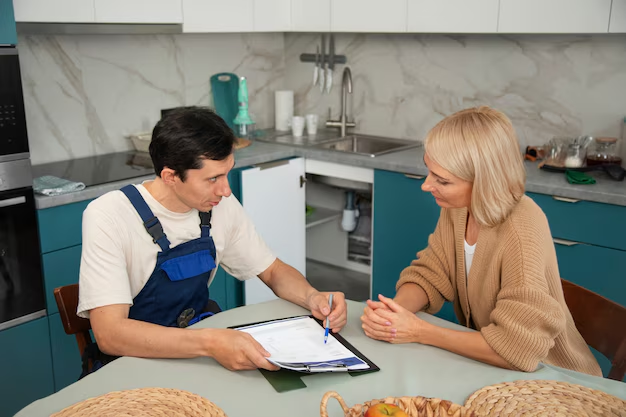Why Isn’t My Refrigerator Cooling? Your Complete Guide to Quick Fixes and Solutions
Discovering that your refrigerator has stopped cooling can be a perplexing and frustrating experience. After all, it’s one of the most important appliances in your home, preserving your food and keeping your favorite treats fresh. But before you panic and consider costly replacements or repairs, there are several steps you can take to solve this common problem. This guide will walk you through what to do when your refrigerator stops cooling, potential causes, troubleshooting tips, and when to call a professional.
💡 Troubleshooting Basics: Quick Checks to Get You Started
Before delving into complex diagnostics, there are a few simple checks you can perform to potentially restore your refrigerator’s cooling function. Here are some straightforward steps to begin with:
Power Supply Check 🔌
- Ensure Plugin: Confirm that the refrigerator is plugged in properly. Sometimes, the cause is as simple as a loose plug.
- Breaker Box: If the unit is plugged in but not working, check your breaker box. A tripped circuit can cut off power to the refrigerator.
Thermostat Settings 🌡️
- Temperature Dial: Ensure that the thermostat is not accidentally set to a warmer setting. For optimal performance, refrigerators should generally be set between 37°F and 40°F.
Door Seals and Gaskets 🚪
- Seal Inspection: Check door seals for damage or dirt. Poor seals let warm air in, causing the fridge to work harder to maintain coolness.
- Cleaning Tips: Clean the seals with mild detergent and water to remove any debris.
🤔 Exploring Potential Causes Moving Beyond Basics
If your initial checks do not bring your fridge back to life, it’s time to explore other potential causes. Understanding these will empower you to make more informed decisions.
Compressor and Coils
The compressor and coils are essential components of the refrigerator’s cooling system.
- Condenser Coils 🌀: These are typically located at the back or the bottom of the fridge. If they are covered in dust, it can impede cooling. Clean them with a vacuum or a brush.
- Compressor Failure 🔧: If the fridge is not cooling but the light is on, the compressor might be the culprit. Check if it is running by listening for a humming noise. If it’s silent, it may need professional attention.
Ventilation and Airflow
Good ventilation and airflow are crucial for maintaining an ideal cooling environment.
- Blocked Vents 🛑: Ensure nothing inside the fridge is blocking air vents. Blocked vents restrict airflow, causing cooling issues.
- Overstuffed Fridge 🍎: An overcrowded fridge can restrict airflow and make it difficult to maintain a consistent temperature. Consider reorganizing or removing some items.
Thermostat and Control Boards
The thermostat and control boards regulate the temperature settings.
- Faulty Temperature Control 📊: If adjusting the thermostat doesn’t change the temperature, it might be malfunctioning.
- Electronic Control Board 💻: Modern appliances have control boards that manage their functions. A fault here can bring about cooling issues, requiring expert diagnostics.
🛠️ DIY Fixes You Can Try Right Now
For those who love a hands-on approach, here are some DIY solutions that might resolve cooling issues without needing professional help.
Defrost Your Freezer
If you notice ice buildup in the freezer, it might block airflow in the fridge.
- Manual Defrost ❄️: Unplug the fridge and let it thaw completely. This can take several hours but will help clear ice-blocked pathways.
- Hair Dryer Method 🔥: As a quicker solution, use a hairdryer to speed up the defrosting process—but be cautious of water and electricity.
Realigning and Leveling
Making sure your fridge is level can aid in the optimal function.
- Adjust Feet/Wheels 🔧: Use a level and adjust the fridge’s feet or wheels. A tilted fridge can disrupt the door seal which affects cooling.
🔍 When to Call a Professional Repair Service
If none of the above tips restore your refrigerator's cool, it may be time for professional intervention. Here are scenarios that typically require expert assistance:
- Electrical Problems ⚡: Issues with wiring or internal electronics demand expert handling for safety reasons.
- Refrigerant Issues 🧊: Only a licensed technician should handle refrigerant-related problems, ensuring compliance with environmental regulations.
- Persistent Temperature Fluctuations 🌡️: If temperatures remain inconsistent despite all efforts, deeper technical issues might be involved.
📋 Keep Your Cool: Essential Takeaways for Refrigerator Care
To keep your appliance running optimally and avoid future issues, consider these maintenance tips:
- Regular Cleaning 🧹: Clean coils and vents every few months to prevent dust buildup.
- Temperature Monitoring 🌡️: Use a thermometer to regularly check your fridge's temperature.
- Door Check 🚪: Inspect door seals often for signs of wear or poor seal integrity.
- Routine Inspections 🔍: Schedule professional maintenance checks yearly to catch potential problems early.
⚡ Quick Summary: Ensuring a Lifelong Cool
Here’s a handy list to ensure consistent performance:
- ✅ Check Power and Settings: Ensure proper plug-in and ideal thermostat settings.
- ✅ Inspect and Clean Components: Regularly clean coils, check door gaskets, and unblocked air vents.
- ✅ DIY Efforts: Defrost to remove ice buildup and ensure proper alignment for effective seals.
- ✅ Professional Help: Don’t hesitate to seek expert assistance for intricate issues.
🛡️ Keeping calm and systematically working through the steps outlined will not only prolong the life of your refrigerator but also ensure you are prepared for any future quirks in its operation. Maintaining its health with regular checks and clean-ups will keep it cooling just right for years to come.
